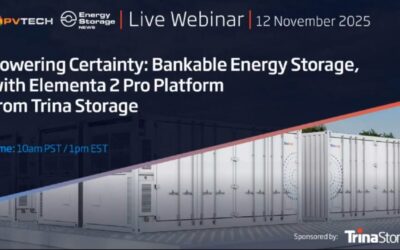
The CEO of Primus Power agrees that at present, lithium battery systems are more bankable than the flow battery energy storage systems of the type his company makes, but asserted that he believes this will change over time.
While flow battery providers including Primus and a number of rivals are rushing to commercialise a technology that is moving from a ‘market-seeding’ phase, where systems were sent out on a pilot or demonstration basis, the market is still dominated by its high-power counterpart in lithium-ion.
Recent reports from the likes of GTM Research have shown that the US battery energy storage market is around 95% lithium battery-based, around 0.5% lead-acid and the remainder mostly flow batteries from the likes of Primus, VIZn Energy and UNiEnergy Technologies.
In a Q&A interview with Primus Power CEO Tom Stepien, published last week on Energy-Storage.News, Stepien agreed with the assertion of I.H.S Markit analyst Julian Jansen, who in August told the site that lithium is predicted to dominate the space in the near future. Jansen said that even in longer duration markets, where flow might be expected to have a traditional advantage as a high-energy technology (as opposed to high-power), lithium is holding steady.
Try Premium for just $1
- Full premium access for the first month at only $1
- Converts to an annual rate after 30 days unless cancelled
- Cancel anytime during the trial period
Premium Benefits
- Expert industry analysis and interviews
- Digital access to PV Tech Power journal
- Exclusive event discounts
Or get the full Premium subscription right away
Or continue reading this article for free
Jansen said a lot of growth was being seen in the market for systems with 2-6 hours duration, with the amount of storage seen per project pushed up on average in part by the growing case for dispatchable solar-plus-storage.
“It’s interesting because in the past we’ve attributed that opportunity specifically to non-lithium-ion technologies. But what we’ve seen over the past year or so is that for four hour systems, lithium-ion is becoming competitive,” Jansen said.
The likes of Tesla, Advanced Microgrid Solutions and AES executed several four-hour projects in California in the past year to provide peaking capacity under the state’s Resource Adequacy requirements following the Aliso Canyon gas leak, for example.
‘Market will have at least a couple of different solutions’
Jansen said that this preference for lithium batteries is based to a great extent on the fact that many industries including computing are now comfortable with the battery chemistry and there is now an –albeit short – track record of projects successfully deployed on a commercial basis using the technology.
“As a power battery, lithium-ion is good. As an energy battery, flow can be a winner and then we think that there’s certain attributes within flow that will mean the winner should rise to the top. But today, flow is not as bankable as lithium-ion,” Tom Stepien of Primus Power said.
“I think that will change as we get systems out there, as our competitors get things out there, they will be judged on their performance merits. Then I think over time we’ll see that balance change.”
Stepien said that from there, with the growth of “multi-hour” opportunities, such as preventing the curtailment of wind energy from being injected into the grid in China due to oversupply, or demand charge reduction, the case for flow batteries as a technology class separate to lithium will grow, with commensurate recognition of the batteries’ advantages.
Read the Q&A interview with Primus Power CEO Tom Stepien, here.





